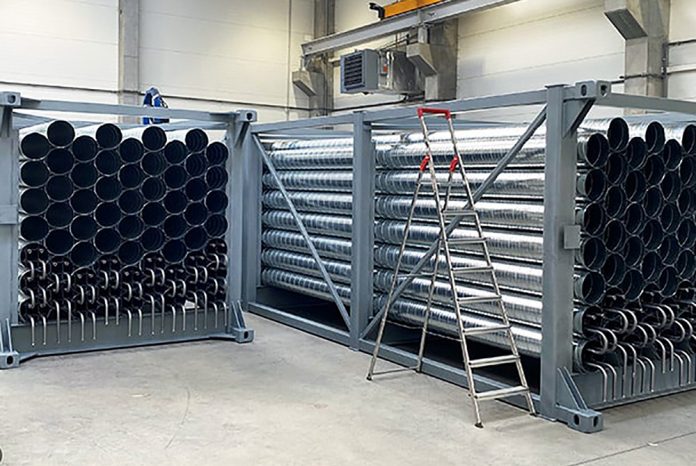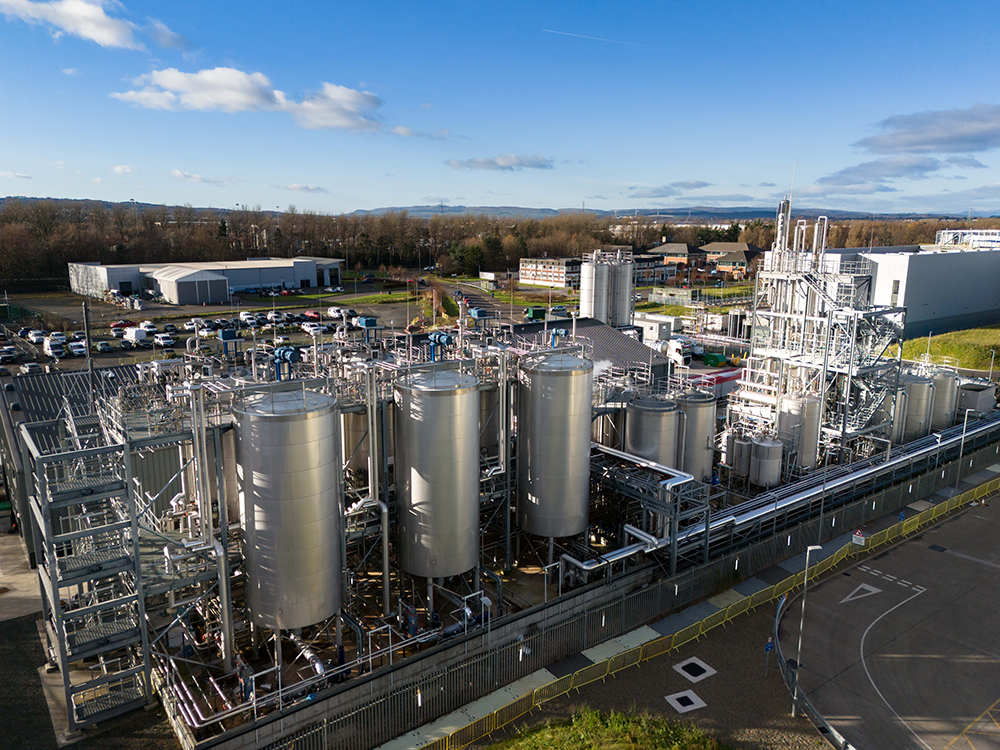Thermal storage is the key to powering industrial processes in a sustainable, reliable, and affordable way, says Christian Thiel, CEO, ENERGYNEST.
Industrial heat is a critical input in many processes that the chemical industry depends on. It is also a large source of emissions, with fuel combustion accounting for three quarters of the sector’s CO2 emissions, according to the International Energy Agency (IEA). In fact, it is one of the most underestimated problems we face in the fight against climate change – and a stumbling block in decarbonising industry and cutting fossil fuel dependencies.
If the current geopolitical situation has taught us one lesson, it’s that we must accelerate our transition away from fossil fuels – not only to avoid the devastating effects of climate change but to ensure stability, energy security and affordable energy prices.
Cutting the chemical industry’s dependency on fossil fuels is also critical for its survival and enduring competitiveness. Adopting low carbon production methods and enabling a more circular economy is vital to retaining and winning new customers as pressure to reduce carbon footprints across the supply chain continues to mount and is front of mind for investors, consumers and the public.
A solution to the energy trilemma for the chemical industry
As the UK is preparing for a difficult winter, with warnings of blackouts and soaring energy prices, it is a critical time to employ all solutions at our disposal to ensure industry and businesses continue to operate without disruption. Thermal storage is one proven solution and can be integrated into plants within less than twelve months – it makes industry less dependent on natural gas by electrifying process heat from fossil sources and storing it for later use. Using this technology, companies can quickly take control of their heat and steam supply and maintain manufacturing processes with significantly reduced use of fossil fuels. In essence, it addresses all aspects of the so-called ‘energy trilemma’ – it boosts security of supply by enabling green heat and steam production from local renewable energy generation, it reduces the cost of energy and lowers the carbon intensity of production.
Thermal storage and the concept of heat-on-demand
Thermal battery technology can be used in almost all industries and works particularly well when used in the chemical industry. The technology can address a range of industrial applications – electrification, waste heat recovery and steam grid balancing.
Electrification through thermal batteries can completely eliminate the need for fossil fuels. The thermal batteries can be connected to on-site renewable energy installations to take off-peak electricity from renewables, ensuring that energy reserves last longer. It can provide high-grade, low carbon steam (saturated or superheated) to all industrial processes for manufacturing as the thermal batteries allow companies to buy large quantities of renewable energy when costs are low and store it until needed – enabling the use of heat-on-demand.
In addition to electrification, thermal storage can also leverage the untapped potential of waste heat. Quite often, valuable high temperature heat from industrial processes cannot be re-used and needs to be released as waste heat. Thermal storage batteries can store heat and store it for later reuse, increasing independence from the grid and limiting exposure to fluctuations in the energy market.
In a typical chemicals plant, heating of endothermal- or cooling of exothermal processes must continue round the clock – adding major cost and resource burdens. And more often than not, batch processes or interruptions lead to imbalances between supply and demand which require back-up boilers to start or steam to be let to go to waste. Thermal storage can also facilitate a steam-to-steam process for steam grid balancing by storing, time-shifting and balancing high- or medium pressure steam to make it available on demand to the local steam grid.
The architecture of a thermal battery
At a time when energy efficiency is of utmost priority, all these use cases can make a significant difference to energy security and affordability in the chemical industry. These modes of operation are examples of applications that are already being implemented today by ENERGYNEST, a manufacturer of thermal batteries with locations in Germany, Norway and Spain.
ENERGYNEST’s technology uses a steel and concrete mix called Heatcrete© – a high performance concrete, which is composed of 75% quartz aggregates and 25% additives, which can be manufactured at low cost and has excellent thermal properties. A steel carrier structure encloses HEATCRETE®-embedded carbon steel pipes, through which a heat transfer fluid is charging and discharging the storage system at a pressure of up to 160 bar. A single module, fitting into a standard 40-foot container, provides an energy capacity of up to two megawatt hours thermal.
ENERGYNEST’s ThermalBattery™ system is modular, scalable and purpose-built for industrial applications. It is made from abundant, recyclable and non-hazardous geomaterials that are easy to acquire, which means local workforces and materials can be used for its manufacture and transportation can be kept to a minimum. Due to its modular structure, this system can be scaled up into the gigawatt hour range.
Unlocking energy flexibility
At the world’s largest fertilizer manufacturer Yara International’s plant in Porsgrunn, Norway, ENERGYNEST is demonstrating how the technology works in practice by integrating a 4 MWh thermal battery and directly connecting it to the steam grid at the production facility.
This renewable storage system now provides increased flexibility to the plant by balancing local steam production and reducing the amount of excess steam. This form of steam grid balancing ensures that fewer fossil fuels need to be used to generate additional steam and that fluctuations in production and energy feed-in can be balanced out.
A ready solution
Current price pressures and increases in CO2 prices mean industry must act swiftly: rapid implementation and scaling of climate-friendly storage technologies is essential. Which means one thing – there is no better time than the present to start the conversation about industrial heat at your company. Thermal storage is commercially viable and ready. It is sustainable, economical, quickly implemented and scalable. The batteries can therefore play a central role in securing industrial heat supply in the current energy crisis and become a core component of low carbon production processes. Thermal storage should be on the agenda of every chemicals company – why not put it on the agenda for your next management meeting?
Saving energy and dispatching on demand is going to be crucial to get us through the next two winters – and on our way to a world without fossil fuels.
More details at energy-nest.com.









